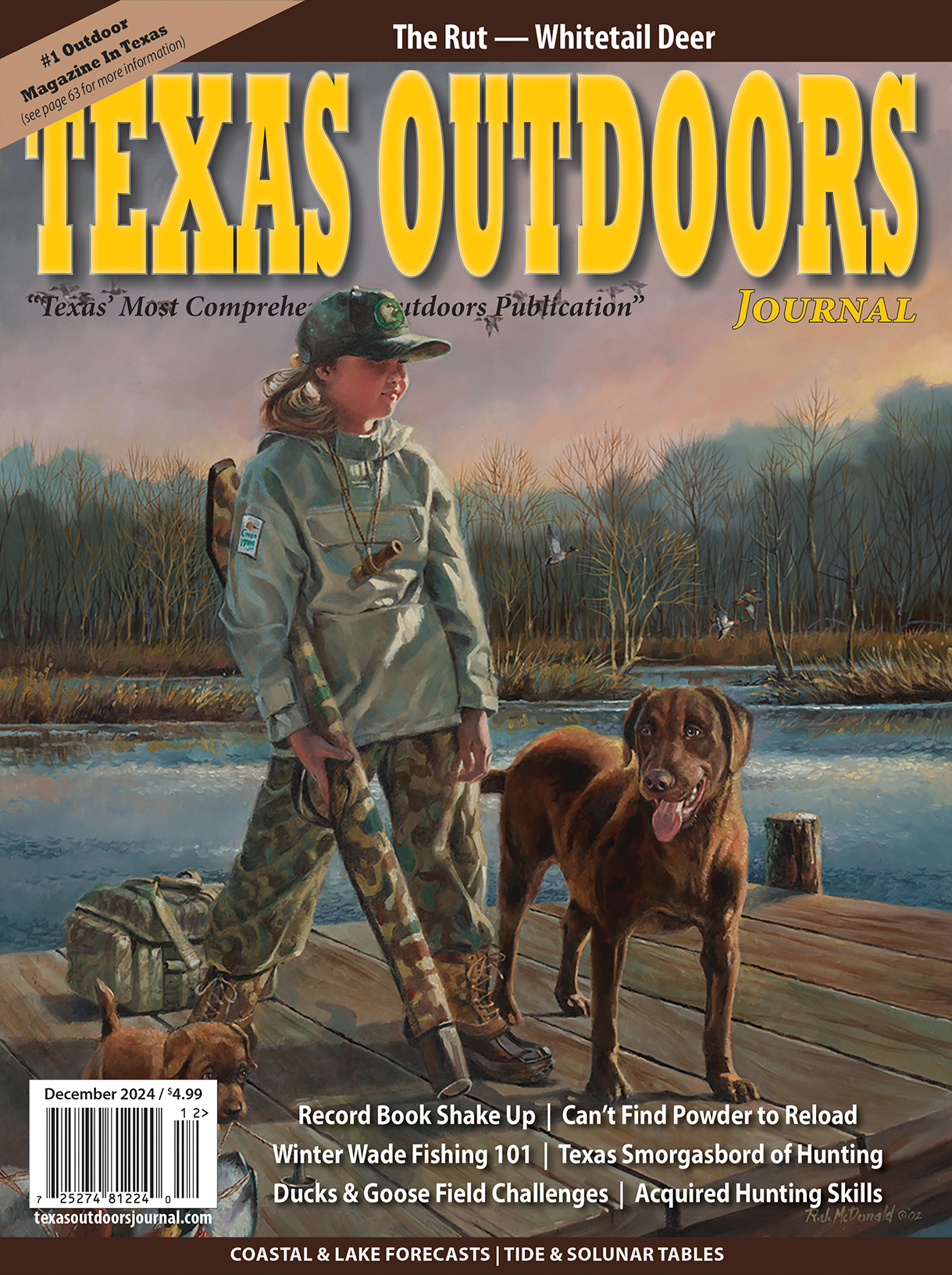
Waterfowl Hunters Can Lend a Hand to Prevent Spread of Invasive Species
AUSTIN – The new waterfowl hunting season is just around the corner and hunters across the state are gearing up in anticipation for opening day. The Texas Parks and Wildlife Department (TPWD) reminds waterfowl hunters to join the fight against the spread of aquatic invasive species like giant salvinia and zebra mussels. Hunters play a key role in this preventive effort when they clean, drain and dry their boats and equipment, including decoys and other hunting gear, before traveling from lake to lake.
Aquatic invasive plants can easily become entangled or trapped on boats and boat trailers and moved to other lakes. Giant salvinia, one of the most problematic aquatic invasive plants in Texas, can double in size and acreage in less than a week, quickly becoming a problem. Just a small fragment of giant salvinia or other aquatic invasive plants can cause an infestation in a new lake, making it critical for boaters to clean, drain and dry their boats and gear.
“Giant salvinia is often thought of as a plant that blocks recreational access for anglers and boaters, but it can cause serious problems for waterfowl hunters too,” said John Findeisen, TPWD Aquatic Habitat Enhancement Team Lead. “Not only does it form thick mats that block hunters’ access to prime waterfowl hunting areas, but it can also outgrow and replace the native plants that waterfowl rely on for food and habitat.”
Other major invasive species threats in Texas include zebra and quagga mussels. Currently, zebra mussels are found in 34 Texas lakes across six river basins as well as in river reaches downstream of infested lakes. In addition, for the first time In Texas, quagga mussels were detected in Lake Amistad in 2021.
These invaders can harm aquatic life, litter shorelines with sharp shells, damage boats, clog water intakes and cause costly damage to water supply and control infrastructure. Invasive mussels attached to plants or boats can travel to new lakes, and boats and equipment can transport microscopic invasive mussels’ larvae in residual water.
“Waterfowl hunters can help keep invasive mussels and aquatic plants from being moved and harming more lakes by taking a few minutes to remove plants and debris from boats, along with draining water before leaving the lake and allowing everything to dry completely afterward before traveling to a new lake,” said Monica McGarrity, TPWD Senior Scientist for Aquatic Invasive Species. “Taking just a few minutes for these simple steps can help prevent impacts on ecosystems, infrastructure, and recreation and make a huge difference in our efforts to protect and preserve Texas lakes for current and future generations.”
In addition to cleaning, draining, and drying their boats and trailers, hunters should also make sure they aren’t inadvertently carrying invasive species on other equipment like waders, decoys, decoy bags, and marsh sleds by cleaning, draining, and drying this equipment as well. A video to help hunters learn how to properly clean, drain and dry can be found on the TPWD YouTube Channel.
On top of the harm invasive species can cause to aquatic ecosystems, water infrastructure and the recreational experience at lakes, the transport of these organisms can result in legal trouble for boaters. Transporting prohibited aquatic invasive species in Texas is illegal and punishable with a fine of up to $500 per violation. It’s also the law that boaters must drain all water from their boat and onboard receptacles, including bait buckets, before leaving or approaching a body of fresh water. They must also remove all invasive plants from the boat, trailer and tow vehicle before leaving a lake.
TPWD and partners monitor for invasive species in Texas lakes, but anyone who finds them in lakes where they haven’t been reported before – or who spots them on boats, trailers or equipment– that is being moved can help identify and prevent new introductions by reporting the sighting of boats being moved to TPWD immediately at (512) 389-4848 or by emailing photos and location information for new invasions to [email protected].
To learn more about giant salvinia, zebra mussels and other invasive species in Texas, visit tpwd.texas.gov/StopInvasives.








